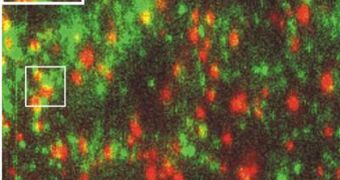In case of an infection, when pathogens pour freely through an open wound inside the body, the immune system must be quick on the spot with its response. Various types of immune cells need to be activated, and all of this must be done within moments of the time when the invading microorganisms were first detected. Failure to do so could lead to widespread infection, a situation that would significantly decrease the defense system's ability to take on whatever pathogen invaded the body. Its efforts must therefore be concentrated as fast as possible, AlphaGalileo reports.
Dendritic cells are among the most important ones in the immune system. They are not exactly involved in the cleansing process, but they play a huge role in identifying the pathogens, and in communicating their finds to T-cells, which are one of the body's main weapons against the invaders. The thing that dictates whether a successful response will be mounted or not is the dendritic cells' ability to be correctly activated, travel to the lymph nodes, and then adhere firmly to the surface of T cells that, in this manner, become aware of the pathogen they are fighting against.
The integrin lymphocyte-associated antigen-1 (LFA-1) is primarily responsible for regulating all of these processes. The stable adhesion between the dendritic and T cells could only be facilitated by lipid rafts, which were hypothesized in previous studies, but never before identified. Experts believed that these structures essentially organized assemblies of cell membrane proteins, including glycosylphosphatidylinositol (GPI) anchored proteins. Discovering these rafts has proven to be extremely difficult, mostly because they are very small and do not exceed the nano level.
Institute of Bioengineering of Catalonia (IBEC) scientist María García-Parajo, the leader of the BioNanoPhotonics group, recently managed to confirm the existence of these lipid rafts for certain. A highly advanced imaging technique, called near-field scanning optical microscopy (NSOM), was used in order to resolve the particularly small structures. Details of the amazing achievement were published in the latest online issue of the respected journal Proceedings of the National Academy of Sciences.
The recent discoveries are extremely important. A large number of allergies and serious conditions, such as autoimmune diseases, is directly related to the response that the immune system gives to perceived pathogens. With the new knowledge, new therapies could soon be set in place to treat these conditions, or at least improve their sufferers' quality of life.

 14 DAY TRIAL //
14 DAY TRIAL //